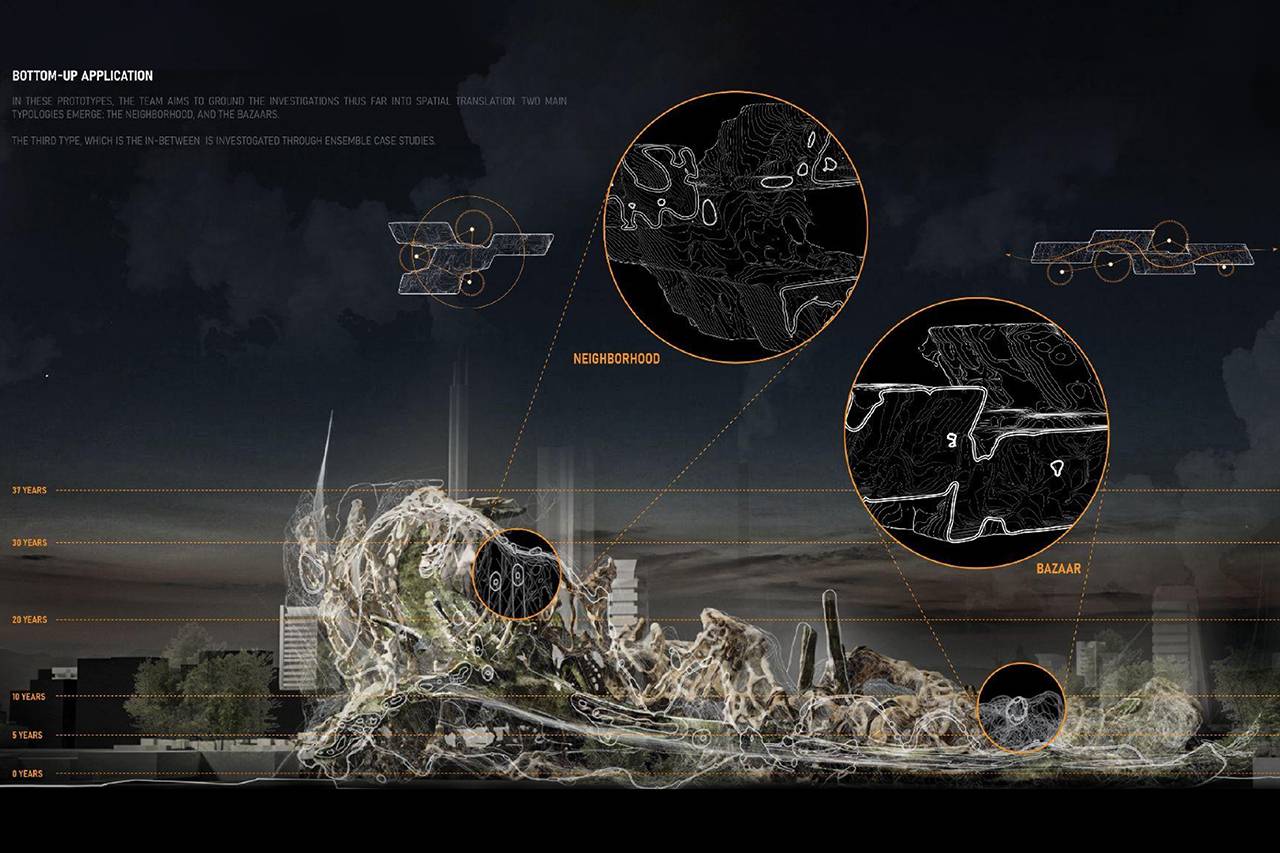FAU School of Architecture Students and Faculty Present AI Research at International Conferences
Friday, Jul 07, 2023
Two faculty members and several graduates of the School of Architecture in Florida Atlantic University’s Dorothy F. Schmidt College of Arts and Letters recently presented their research virtually at international conferences. For the past three years, faculty members of FAU’s School of Architecture have developed an innovative line of research leveraging artificial intelligence models for architectural pedagogy. During the spring of 2022, Assistant Professor Shermeen Yousif, Ph.D., and Associate Professor Emmanouil Vermisso, Ph.D., offered topical design studio courses which resulted in multiple scholarly peer-reviewed publications on this topic that were presented at two separate conferences and published in conference proceedings.
Yousif’s collaboration with graduating students Yagmur Akyuz, Matthew Craven and Luisa Giffoni (FAU ’22) resulted in a paper titled "Incorporating Physical Experimentation into Creative DL-Driven Design" that was presented virtually at the Association for Computer-Aided Architectural Design in Research Conference in Asia, which was held in India. The paper introduced a novel design workflow that leverages multiple interconnected deep learning (DL) models to enable varying degrees of design agency. This approach allows design intentions to manifest systematically throughout the process the selection of DL models, and strategic connections between them. In parallel to the interconnected DL models, a series of physical experiments were conducted for dataset augmentation and evaluation, and to inform the overall process. By adopting this iterative collaborative approach, the design process becomes enriched, thereby encouraging creative design thinking and augmenting the prospects of innovative outcomes.
In Yousif’s thesis design studio titled "Deep Ecologies: Navigating an AI-Generated Design Space towards a Bio-centric Architecture," a novel approach to design was investigated, by incorporating generative deep learning methods. Students explored a design workflow employing interconnected DL models (i.e., StyleGAN, Pix2Pix, CycleGAN, PixPlot, SOM) to address architectural systems at multiple phases. The investigated design workflow hinges upon the transition from "expert systems," to "learning systems," which are inspired by the human brain (Hassabis 2018), strengthened by accessing a search space that is otherwise beyond the designer’s reach, leading to augmented design creativity. In this way, the designer becomes the choreographer of how multiple DL models interact with each other and with human agents, thus determining the levels of autonomy in the design framework.
“The proposed design workflow applied to a test-case with AI experiments conducted in parallel to physical experiments informing each other,” said Yousif. “The overall workflow followed a sequential logic, with the result of each model’s output feeding into the input of the next. This adaptive node-based approach allowed risk-taking and open-ended exploration.”
In the test-case application of the prototyped design workflow, the brief was to design a speculative bio-centric architecture that can leverage a new symbiotic relationship with natural ecosystems. The intended outcome was a speculative design prototype that utilizes mycelium as a building material, and it was never predicted; it represents a culmination of the interconnectivity of the DL models, within an ever-growing design space where decision-making alters that space, to unfold creative design exploration.
The “Creative Assemblies: Make-Shift Architectures of Necessity” project developed and led by Professor Vermisso explored the application of pre-trained text-to-image AI models (neural language models: NLMs) for architectural ideation. The project considered restructuring the Bangladeshi ship-breaking culture to reimagine new communities from decommissioned marine vessels. Using early NLMs (Wombo Dream; VQGAN+CLIP) to complement other design methods, this approach likely reflects the first attempt of integrating natural language processing (NLP) in the Architecture curriculum, ahead of other schools which currently leverage updated NLMs which employ stable diffusion. Helping students to develop an early sensibility with semantically-based generative workflows is an important milestone, considering the rapid progression of ready-to-use artificial neural networks.
“The inclusion or negation of implicit historical importance is directed through heterogeneous references and semantics respectively,” said Vermisso. “The former tends to summate an outcome that is historically relevant, by combination, while the latter fuses historical references through language, thereby neutralizing them.”
Vermisso’s student Shambil Khan (Fau ’22) contributed to co-authoring and presenting a paper virtually titled “Steampunk Architectures: Finding a novel aesthetic in scavenged ship hulls, inverted realities and creative assemblies through natural language processing” at the international conference “Traits of Postdigital Neobaroque” held at the University of Innsbruck (Austria, Dec. 2022). The presentation discussed design inspiration from heterogeneous conceptual references, engaging in a ‘reverse’ creative process of make-shift interventions which rest on vernacular and technological factors. Khan’s Bengali origins facilitated a semantic analysis of native cultural and craft-driven idiosyncrasies for running the NLMs. Shifting from semantics of ‘disassembly’ to ‘re-assembly’ enabled the unveiling of a latent visual language from the logistics of ship construction.
High/Low-level feature manipulation in NLMs using separate image scaffolds for “structure” (low-level) and “material” (high-level). Materially/structurally complexified, high-resolution findings composed of the same low-level detail present in an original 3D scenario are juxtaposed with high-level characteristics derived from a previous VQGAN+CLIP. This had been prompted with “sheets of metal and iron ore,” producing an image with small panels of a copper substance, seemingly hammered together into fine interlocked connections.
As recent developments in technology emerge at an accelerating rate, academic faculty are challenged to push the boundaries of Architectural design and keep up with research in other fields. The FAU School of Architecture is committed to not only absorbing current state-of-the-art paradigms, but also establishing pilot projects which question design implementation within the discipline of Architecture. Such projects assume the pivotal role of pushing research frameworks within and across the school, as well as exposing students to cutting-edge methods which render them professionally desirable upon graduating into a highly competitive market. (S.Khan was recently offered a position at Coop Himmelb(l)au, a renowned European architectural practice pioneering architectural AI). This particular line of AI-related inquiry distinguishes the School of Architecture, positioning it at the vanguard of academic programs today. Thanks to undergraduate research on the topic of “Architectural AI,” the School of Architecture is poised to establish itself as a pioneer in architectural education.